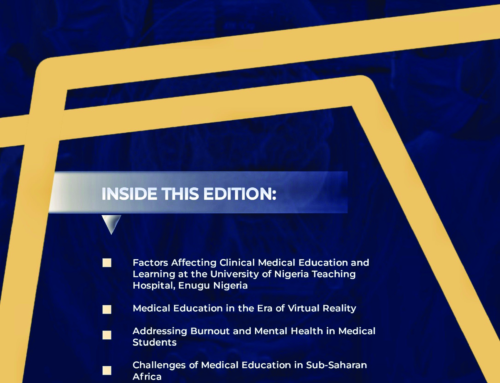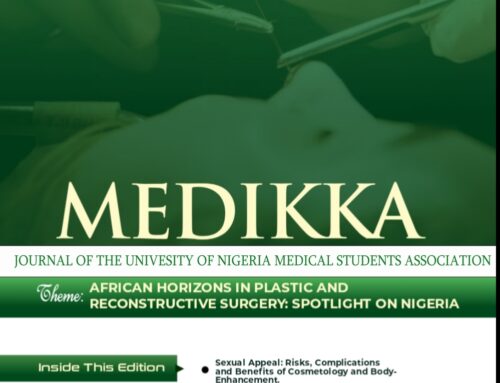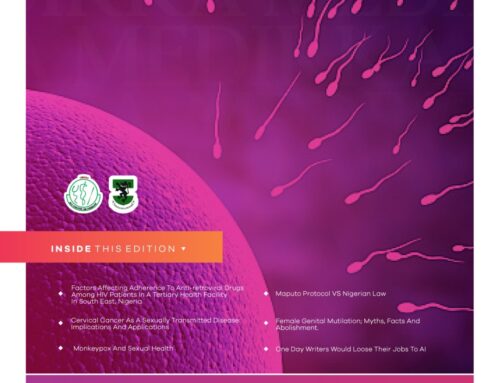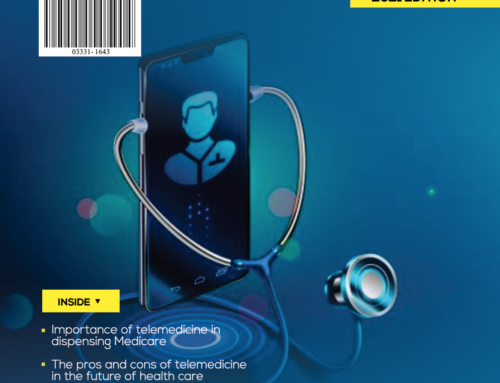mainly by the bacteria Mycobacterium tuberculosis. Over the past two decacdes, the prevalence has increased tremendously
properly treated is curable without serious complications in most cases. But the fatality rate within 5 years if left untreated is
in 50-65% of cases1.
INTRODUCTION
On the 26 August 2005 The World Health Organization (WHO) Regional Committee for Africa comprising health ministers from 46
Member States declared ‘tuberculosis an emergency in the African region’ – a response to an epidemic that has more than
quadrupled the annual number of new TB cases in most African countries since 1990 and is continuing to rise across the
continent, killing more than half a million people every year2. The high incidence of tuberculosis in Africa is not just
attributable to poverty and HIV epidemic but to a large extent to the weakness of our health care system which is unable to
efficiently detect, diagnose and treat TB patients.
ETIOLOGY
The organisms that cause tuberculosis belong to the Mycobacterium tuberculosis complex. The complex comprises M.
tuberculosis, M. bovis, and M. africanum of which M. tuberculosis is the commonest and most important agent.3 M. tuberculosis
causes a pulmonary infection which is contracted by inhalation. However oropharyngeal and intestinal tuberculosis that is
contracted by drinking unpasturised milk is caused by M. bovis4.
A group of atypical mycobacteria that ordinarily do not cause infections in humans, frequently cause serious infections in AIDS
patients. These include M. avim-intrcellulare (MAI) complex, M. kansasii which cause both pulmonary and systemic diseases.
EPIDEMIOLOGY
Tuberculosis is a global disease affecting both children and adults. More than 2 billion people (about one-third of the world
population) are estimated to be infected with tuberculosis5. Though in a majority of the people this does not manifest because
of their strong immunity, a good percentage suffer from active disease especially among the elderly, young children and immune
compromised like malnourished and HIV patients, and without proper treatment die of it. Almost 1.3million cases and 450,000
deaths occur in children each year.6 The stastistics on TB threat estimates that TB kills someone approximately every 20
seconds.7 This is alarming.
The prevalence of TB varies substantially around the world with highest rate (>100/100,000 persons) occurring in sub-Saharan
Africa, India, China, Southeast Asia and Micronesia. The situation is worst in Africa (343/100,000 persons) which is said to be
facing the worst tuberculosis epidemic since the advent of the antibiotic era…driven by a generalized human immunodeficiency
virus (HIV) epidemic and compounded by weak health care systems, inadequate laboratories, and conditions that promote
transmission of infection, a devastating situation that has steadily worsened, exacerbated by the emergence of drug-resistant
strains of tuberculosis.8
The WHO Country Representative, Dr Peter Eriki, presenting the goodwill message of the African Regional Director of WHO, Dr
Luis Gomes Sambo for The 2009 World Stop TB Day, recalled that although the organism that causes tuberculosis was discovered
by Robert Koch exactly 127 years ago TB is still a major public health problem especially in the African Region…the region that
accounts for 30% of global TB burden even though it represents approximately only 10% of the world population9. Poverty, HIV,
and drug resistance are major contributors to the resurging Africa TB epidemic.
Tuberculosis statistics for “high burden”African countries, 200910
Country All cases Per 100,000
population
South Africa 490,000 978
Nigeria 460,000 297
Ethiopia 300,000 362
DR Congo 250,000 379
Kenya 120,000 301
Uganda 96,000 293
Mozambique 94,000 411
Zimbabwe 93,000 743
Thailand 93,000 137
Tanzania 80,000 183
MODE OF TRANSMISSION
Transmission of tuberculosis is air-borne. When a person that has active pulmonary tuberculosis coughs, sneezes, spits, or even
talks, s/he releases many droplet nuclei into the air and people nearby may inhale the bacteria and become infected. It is this
dangerous and the closer the contact the higher the risk of being infected. Left untreated, any person with active TB infects
on the average 10-15 people each year.11 One can be infected but may not have the symptoms of the disease like cough and so
do not transmit the infection. The person is said to have inactive or latent infection. He is able to contain the disease because
s/he has a strong immunity and once the immunity weakens s/he develops the active disease and can infect others.
Individuals at the risk of being infected include: those in frequent close contact with someone that has active disease; those
with weak immune status
Factors that increase the frequency of close contacts include: overcrowded environments like prisons, dormitory, refugee
camps, immigration centers and any other condition that favour overcrowding with poor ventilation. Health care work: doctors,
nurses community health workers etc have increased chances of exposure to TB owing to the nature of their work. Factors
that weaken immunity include: diseases like HIV/AIDS, diabetes mellitus, end stage renal disease, cancers such as leukaemias;
drugs like cancer chemotherapy, drugs used to prevent rejection in organ transplant, drug used to treat autoimmune diseases
like Crohn’s disease rheumatoid arthritis and psoriasis; poverty and malnutrition; age (infancy and old age).
The association between HIV infection and tuberculosis stems from two distinct processes. In some cases, populations with
latent tuberculosis acquire HIV infection, which increases 100-fold the risk of reactivation of tuberculosis. In other cases,
people with HIV-induced immunosuppression acquire new tuberculosis infections and are at extraordinarily high risk for active
tuberculosis. This cycle of infection and disease is amplified by the interaction between patients with active tuberculosis and
those with HIV infection in clinics, hospitals, and the broader community.12
PATHOLOGY
Once the tubercle bacilli are inhaled and deposited on the respiratory mucosa they are ingested by macrophages. Inside the
macrophages, the organisms inhibit the microbicidal response by altering the PH of the lysosome and thus proliferate
unhindered. Meanwhile some macrophages reach the regional lymph nodes where they present the mycobacterial antigens to
cd4+T cells. This together with interleukin-2 produced by the macrophages help the cd4+ T cells to differentiate into TH1
subset. These T cells produce interferon gamma which activate the macrophages to kill the bacteria by producing nitric oxide
and other free radicals which are capable of oxidative destruction of the mycobacterial constituents. The activated
macrophages also produce TNF-a which helps recruit monocytes to the focus of infection where they undergo activation and
differentiation into giant cell that characterize the granulomatous inflammation. This process of cell-mediated immunity (which
takes about 3 weeks to achieve) comes at a cost of hypersensitivity with the accompanying tissue destruction, caseating
granulomas and cavitations which are the pathologic features of tuberculosis. Hypersensitivity and resistance occur in parallel.
Thus the demonstration of hypersensitivity by tuberculin test positivity is an indication of resistance while the opposite
indicates lack of resistance.
The genetic makeup of an individual has been found to influence the immune response to the disease. In some people with
polymorphisms of the NRAMP1 (natural resistance-associated macrophage protein 1) gene, the disease may progress without
development of an effective immune response.13
PRIMARY TUBERCULOSIS
This is the kind of the disease that occurs in a previously un-sensitized person. It may take any of these courses depending on
the individual’s immunity.
Latent(inactive) state
This is seen in immune-competent people. Here a strong immune response follows the infection and the organisms are either
killed or inactivated at the initial focus of infection. The granulomatous inflammation with the accompanying fibrosis and
possible calcification, the Ghon lesion, may be detected radiologically. These individual do not show any symptoms except for
the mild flu-like symptoms they may have at the first few weeks of the infection, time for the cell-mediated immune response to
fully develop. However the infection is reactivated when the immunity is weakened may be by HIV (secondary tuberculosis).
Progressive primary tuberculosis
This condition is found in immune compromised individuals. The incidence of this condition is particularly high among HIV
patients with advanced degree immune suppression (cd4+ cells <200cells/mm3). This is because cd4+ T cells are the mediators of
the immune response that would contain the primary infection. The invading organism proliferate unhindered resulting in
bacteraemia and seeding of the organism at multiple sites in the lungs and other organs like meninges, kidneys etc(military
tuberculosis). The patients are often very ill and infectious and if untreated the prognosis is fatal.
POSTPRIMARY TUBERCULOSIS
This is the kind of disease that result from a previous infection. It occurs as a result of reactivation of a dormant infection. This
may happen many years after the initial infection depending on when the immunity weakens. The factors that can weaken the
immunity include HIV/AIDS, malnutrition, old age, anticancer drugs etc. As a result of the immune suppression, the organism is
activated and proliferate inducing secondary immune response. But this is not strong enough to kill the organism but cause
tissue necrosis with cavitations. Erosion of the cavities into the airways and rupture of blood vessels lead to productive cough
and haemoptysis. The bacteria spread via lymphatics and blood vessels leading to disseminated infection with extra-pulmonary
involvement. The extent of immune suppression determines the frequency of extra-pulmonary involvement rising from 10% to 15%
in mildly immune suppressed patients to greater than 50% in those with severe immune deficiency.14
COMMON SYMPTOMS OF TB
Individuals that have active disease often have the following complaints:
Generalised body weakness, unexplained weight loss, fever of unknown origin, night sweating, chronic cough with sputum
production which may be bloodstained, chest pain, shortness of breath etc. Extra-pulmonary lesions cause other symptoms
depending on the organ involved.
COMPLICATIONS OF TB
The ultimate outcome of untreated tuberculosis is death. Those that survive however suffer many complications. These ranges
from pulmonary complications like fibrosis, lung collapse, tuberculous empyema, obliterative fibrotic pleuritis, etc to extra-
pulmonary such as scrofula, tuberculous meningitis, renal tuberculosis, osteomyelitis, pott’s disease, tuberculous salpingitis and
intestinal tuberculosis which may be the primary focus of infection if contracted by drinking unpasteurized milk. Tuberculosis
may cause eye complicatins like chorioretinitis, uveitis, panophthalmitis, and painful hypersensitivity-related phlyctenular
conjunctivitis and ear complications like tuberculous otitis is which presents as hearing loss, otorrhea, and tympanic membrane
perforation but these are rare.15
DIAGNOSIS OF TB
a high index of suspicion from history and examination is employed in making the diagnosis. A history of any combination of the
following symptoms: Generalised body weakness, unexplained weight loss, fever of unknown origin, night sweating, chronic
cough with sputum production which may be bloodstained, chest pain, shortness of breath etc with a history of contact with
someone with chronic cough will make the clinician to suspect TB. The presence of generalised lymphadenopathy increases the
suspicion.
The following investigations may aid in the diagnosis.
Tuberculin skin test: Mantoux and Heaf tests are examples. A small amount of purified extract of the bacteria is injected just
under the skin. After some days an induration appears on the site of injection in an infected person(positive skin test) but
nothing appears in an uninfected person(negative skin test). This test is only used for screening latent TB. Its low specificity
and sensitivity and inability to discriminate active from latent TB accounts for the limited use in diagnosis of active disease.
Bacille Calmette Guerin (BCG) vaccine and non-tuberculous mycobacteria exposure gives a false positive reaction while false
negative reactions are frequently seen immune suppressed like HIV/AIDS patients and those overwhelming tuberculosis.
Microscopy: this is done using the Ziehl Neelsen or Kinyoun stain or auramine-rhodamine fluorescence method. The specimen
used is sputum (sputum smear test). Bacteria of the mycobacteria family stain positive with Ziehl Neelsen or Kinyoun stain and
are said be to acid fast. Sputum smear is a fast way of testing for TB but is not specific as it does not distinguish tuberculous
from non-tuberculous mycobacteria. Its sensitivity is low in HIV/AIDS patients because their sputum does not have enough
bacteria
Culture: the specimen used is mostly sputum but gastric washing may be used in children since they cannot cough out sputum.
Others include bronchoalveolar lavage and transbronchial biopsy. In extra-pulmonary cases, specimen suitable for the organ
involved is used (CSF in tuberculous meningitis). Culture takes more than four weeks
Radiology: chest x-ray…this shows evidence of calcification suggesting a latent focus. It may show cavitation and effusion in
active disease. CT scan helps in the identification of extra-pulmonary lesions like Pott’s disease. MRI is particularly helpful in
diagnosis of intracranial lesions. PCR makes use of nucleic acid amplification and is the most specific method of detecting the
organism.
Fibreoptic Bronchoscopy: this is done when features on chest x-ray are similar to those of other diagnosis like bronchogenic
carcinoma.
TREATMENT OF TB
Many drugs are available for treatment of tuberculosis. Isoniazid, Rifampicin, Pyrizinamide, Ethambuthol and Streptomycin are
the five first-line drugs used in the treatment of TB. The second-line drugs which are used when the first-line drugs fail include:
Quinolones like ciprofloxacin, ofloxacin, sparfloxacin, levofloxacin; Macrolides like clarithromycin (? active against M.
tuberculosis); b-lactams like coamoxyclav; Rifamycin and rifabutine, rifapentine and rifadin; Clofazamine, Ethionamide, amikacim,
capreomycin, cycloserine, aminosalicylic acid.
The WHO has recommended the following guidelines for treatment of tuberculosis16 :
Category I : New cases of smear-positive pulmonary tuberculosis recommended regimen: Initial phase of treatment with isoniazid
+ rifampicin + pyrazinamide and either streptomycin or ethambutol (2HRZE or S) given daily for two months or till sputum smear
is negative (not more than 3 months). Continuation phase with isoniazid and rifampicin daily or alternate day for four months
(4HR/4H3R3).
Category II: Relapse and treatment failure cases who are smear positive, wherein ‘relapse’ is defined as TB in a patient declared
cured and ‘treatment failure’ as a patient who is smear positive after 5 months of chemotherapy.
Recommended regimen : Initial phase 2SHRZE/1HRZE, i.e. rifampicin combined with isoniazid, pyrazinamide and ethambutol given
daily for 3 months and supplemented with streptomycin for the first 2 months. If patient is sputum smear positive after 3
months, continue initial phase of 4 drugs for another 1 month.
Continuous phase: 5H3R3E3 or 5HRE, i.e. isoniazid, rifampicin and ethambutol given either three times a week under supervision
or daily for 5 months.
Category III : Smear-negative pulmonary tuberculosis with limited parenchymal involvement and extrapulmonary tuberculosis. This
also includes tuberculosis in children as it is mostly smear negative.
Recommended regimen : Initial phase : 2HRZ or 2H3R3Z3, i.e. isoniazid, rifampicin and pyrazinamide given daily or three times
weekly for two months.
Continuation phase : 2HR or 2H3R3, i.e. isoniazid and rifampicin given daily or three times weekly for 2 months, except
pulmonary TB with parenchymal involvement exceeding a total of 10 sq cm on chest radiograph where isoniazid alone should be
given for another 4 months.
Category IV : Chronic tuberculosis defined as a patient who remains smear positive after completing a re-treatment regimen
under supervision. These patients are resistant to multiple drugs including rifampicin, and may be treated with second-line
drugs or experimental drugs. They should be treated with at least three new drugs and treatment continued for 12 months
after becoming smear negative.
In addition to the standard anti-tuberculous drugs adequate nutrition and multivitamin supplements are necessary to reduce
drug adverse effects. In miliary tuberculosis prednisolone 30-60mg daily in divided doses is added till the patient improves.17
Directly observed therapy short-course (Dots) This is a
strategy for treatment of TB which started in 1995 whereby the patient receives the first 2 months of treatment in a centre for
TB where s/he is closely monitored to ensure compliance and safety.
ADVERSE EFFECTS OF ANTITUBERCULOUS DRUGS
The adverse effects of these drugs may not be severe to discontinue the drugs however it is necessary to monitor the organs
involved. Some of the adverse effects may be prevented by administration of multivitamins. Neuropathy is due to a relative
pyridoxine deficiency. Isoniazid promotes excretion of pyridoxine, and this toxicity is readily reversed by administration of
pyridoxine in a dosage as low as 10 mg/d.18
Drug resistance in tuberculosis
Drug resistance is a serious problem encountered in the management of tuberculosis. It is closely associated with in adequate
treatment. The prevalence of isoniazid resistance among US clinical isolates is approximately 10% and resistance to both isoniazid
and rifampin (ie, multiple drug resistance) is about 3%.20 The value is higher in Africa where there is inefficiency in drug delivery
and non-compliance to therapy. Cure is achievable in most cases but requires prolonged treatment with other drugs which are
more toxic and expensive.
CONTROL AND PREVENTION OF TUBERCULOSIS
Before the antibiotic era, tuberculosis control was by the use of sanatoria where patients were made to rest and were placed
on special diets. With the advent of antibiotics in the 1950s the idea of sanatoria was dropped. Since then various combinations
antibiotics have been used with successful results and the prevalence was declining. It was then expected that by effective
treatment, vaccinations, and public-health measures TB would be eradicated by the year 2000 but with the emergence of HIV in
the 1980s, the incidence of TB has increased tremendously.
However TB is still curable and can be controlled and even eradicated if judicious effort is put by everyone involved in the
fight. “It is tragic that this disease has not been brought under control, because I am living proof that TB can be effectively
treated and cured,” said Nobel laureate Archbishop Desmond Tutu, who along with former South African President Nelson
Mandela is a survivor of the disease. “The problem is huge and medical authorities cannot overcome it alone, they need help. A
full course of TB drugs that costs 15 dollars will save the lives of TB patients – and in the case of people who are co-infected
with HIV, extend their lives by precious years until ARVs
Any approach to the prevention and control of TB especially in Africa would include early diagnosis of cases and prompt
treatment; vaccination of children with BCG vaccine and treatment of persons with latent TB who are at high risk of developing
active disease as in HIV patients. The WHO has proposed strategies that would guide the national tuberculosis program in
various countries in the fight against TB. The DOTS strategy promoted by the WHO consists of: (1) political commitment with
increased and sustained financing; (2) case detection through quality-assured bacteriology (starting with microscopic
examination of sputum from patients with cough of >2–3 weeks’ duration); (3) administration of standardized treatment, with
supervision and patient support; (4) an effective drug supply and management system; and (5) a monitoring and evaluation
system, with impact measurement (including assessment of treatment outcomes—e.g., cure, completion of treatment without
bacteriologic proof of cure, death, treatment failure, and default—in all cases registered and notified). This strategy has been
adopted by many African countries including Nigeria but the extent of implemetation and outcome vary. In most of the
countries the incidence of TB has continued to rise – to as high as four-fold in Malawi and five-fold in Kenya over the past 15
years25.
The situation seems worse in Nigeria now as “Nigeria ranks fourth(formerly fifth) among the twenty two high TB countries in the
world, with the highest TB burden in African, also with an estimated record of 772,000 cases, which were smear positive,
resulting in the notification rate for all forms of TB.26 Some of the factors that favoured the higher incidence of the disease
despite the adoption of DOTS strategy include:
• High HIV prevalence in Africa. About a third of HIV patients die of TB.
• The inability of African health care systems to respond to, manage, and contain the growing number of cases of
tuberculosis. This is a result of limitations posed by funding gaps, facilities, personnel, drug supplies, and laboratory capacity.
Many national TB programs are relying extensively on grants from donor agencies like the Global Fund to Fight AIDS, TB and
Malaria (GFATM) with little fund from their own government. Although the President’s Emergency Plan for AIDS Relief (PEPFAR)
and the Global Fund to Fight AIDS, Tuberculosis, and Malaria have donated large sums of money to help address Africa’s health
problems, most of the money has been earmarked for HIV, with a lesser focus on tuberculosis27.
• Slow detection and diagnosis of TB cases. Delay in diagnosis not only worsens the disease and increases the possibility of
death but also multiplies the chances of tuberculosis transmission in the community. The WHO estimates that only half of all
persons with smear-positive tuberculosis are identified28. The situation is worse in Nigeria where the total case detection rate
in 2009 was 19%29. Delay in the diagnosis of TB and commencement of treatment is common in Nigeria and other countries and
this is attributable to patients as well as to the inefficiencies in the health system especially in the national tuberculosis
program. A study from Nigeria showed that 81% of patients delayed for more than one month before presentation at two chest
clinics. The patients had visited local private medical facilities, traditional healers and had a low level of knowledge and
awareness about the disease30.
• The emergence of multidrug-resistant (MDR) and extensively drug resistant (XDR) tuberculosis. MDR is a strain that is
resistant to two or more ‘first-line’ TB drugs while in XDR there is resistance to three or more ‘second-line’ antibiotics as well.
Patients with MDR-TB need to change to a regime containing newer and often less widely-available ‘second-line’ drugs, and the
treatment take a very long time, and is usually far more expensive than standard DOTS therapy because most of the drugs are
still under patent. XDR-TB is even more serious since it is very difficult to formulate an effective treatment for it. In 2006, 53
people in the province of KwaZulu Natal in South Africa were identified as having XDR-TB. Of these people, 52 died within 25
days of tuberculosis being diagnosed. The majority were HIV positive31. The problem with MDR and XDR is not just with the
suffering patients but the fact that these patients transmit what they have to others like health care workers.
As a result, in 2006, the WHO indicated that, while DOTS remains the essential component of any control strategy, additional
steps must be undertaken to reach the 2015 tuberculosis control targets set within the United Nations Millennium Development
Goals. Thus, a new “Stop TB Strategy” with six components has been promoted: 1. Pursue high-quality DOTS expansion and
enhancement. 2. Address HIV-associated tuberculosis, MDR tuberculosis, and other special challenges. 3. Contribute to health
system strengthening. 4. Engage all care providers. 5. Empower people with tuberculosis and communities. 6. Enable
and promote research. As part of the fourth component, new evidence-based International Standards for Tuberculosis Care,
focused on diagnosis, treatment, and public health responsibilities, have recently been introduced for wide adoption by medical
and professional societies, academic institutions, and all practitioners worldwide.
In our country Nigeria there is need for complete implementation of the strategies in a way that suit our local environment so
that the TB target of the Millennium Development Goal -6.,’to halve TB prevalence and death by 2015’, may be realised.
• TB control should be made an integral part of our primary healthcare. Our health centres should be an avenue to reach
out to the most interior parts of our rural areas for rapid case detection and referral to appropriate centres. Rural based
awareness programs should be organised to educate the rural dwellers on TB treatment and mode of transmission, and also to
facilitate case detection.
• improve the quantity and quality of staff involved in TB control;
• rapidly improve TB case detection and treatment success rates with expanded DOTS coverage at national and district
levels;
• reduce the combined TB patient default and transfer out rates to 10% or less;
• scale up interventions to manage TB and HIV together, including increased access to anti-retroviral therapy for TB
patients who are co-infected with HIV, and to chemoprophylaxis against TB for people with HIV;
• rapid diagnosis of resistant strains and appropriate management style to reduce the transmission of such strains;
• expand national TB partnerships, public-private collaboration and community participation in TB control activities;
• intensify advocacy sensitization and lobbying of National and State government to increase budgetary allocation to
health particularly HIV/AIDS, Tuberculosis and Malaria
• Improve capacity building among major stakeholders in the area of project implementation, documentation, monitoring
and evaluation;
• Ensures Programme-based operational research in Tuberculosis at all levels.
REFERENCES
1. Fauci AS et al. Harrison’s Principles of Internal Medicine 17th Ed. US. McGraw Hill Companies, 2008.
2. WHO(2005). WHO declares TB an emergence in Africa. World Health Organisation News releases 2005.[online]. Available
from http:/www.who.int/mediacentre/newsreleases/2005/en/index.html.
3. Brooks GF et al. Jawetz, Melnick & Adelerg’s Medical Microbiology, 23rd Ed. International edition: McGraw-Hill
Companies,2004;320
4. Alexandra J et al. infectious diseases in Robbins and Cotran Pathologic Basis Of Disease,7th ED. Philaddelphia, US:
Saunders- Elsevier, 2004;381
5. Lonnroth K, Raviglione M. Global epidemiology of tuberculosis: prospects for control. Semin Respir Crit Care Med 2008;
29:481.
6. Behrman RE et al. Nelson Textbook of Pediatrics,17th Ed. International edition: W B Saunders Company,2004;332
7. TB Alliance(2011). The Threat of TB. Global Alliance for TB Drug Development. [online] Available from http:/www.
tballiance.com/tb/threat/index.html
8. Chaisson RE: Tuberculosis in Africa – Combating an HIV-Driven Crisis. N Engl J Med 2008; 358:1089-1092
9. WHO(2009). WHO call for implementation of the ‘STOP TB’ strategy in Nigeria. World TB day 2009.[online]. Available from
http:/www.who.int/nigeria/stoptb/2009/en/index.html.
10. AVERT(2011). Tuberculosis statistics for ‘high burden’ countries, 2009. Tuberculosis.[online]. Available from http:/www.
avert.org/tb/stat/2009/index.html
11. AVERT(2011). The spread of Tuberculosis(TB). Tuberculosis.[online]. Available from http:/www.avert.
org/tb/spread/index.htm
12. Chaisson RE, op cit.
13. Kumar V et al. Robbins Basic Pathology,8th Ed. Philadelphia, US: Saunders – Elsevier, 2004;518
14. Kumar V et al., ibid
15. Fauci AS et al., op cit
16. Mohanty KC. Pulmonary Tuberculosi in API Textbook of Medicine,6th Ed. Mumbai, India: API Publishers,1999.
17. Falase A and Akinkugbe O. A Compendium of Clinical Medicine, new ed. Ibadan, Nigeria: Spectrum Books Ltd,2007;140
18. Katzung BG. Basic and Clinical Pharmacology,10th Ed. International edition: McGraw-Hill Companies, 2007;773
19. Sam S. Davidson’s Principle and Practice of Medicine, 20th Ed. Edinburg, UK: Churchill Livingstone- Elsevier,2006;702
20. Katzung BG, op cit.
21. Chaisson RE, op cit.
22. Williams NS et al. Bailey & Love’s Short Practice of Surgery, 25th Ed. London, UK: Hodder Arnold, 2008;894
23. Morris PJ and Wood WC. Oxford Textbook of Surgery, 2nd Ed. Oxford, UK: Oxford Press,2000;253
24. WHO(2005). WHO declares TB an emergence in Africa. World Health Organisation News releases 2005.[online]. Available
from http:/www.who.int/mediacentre/newsreleases/2005/en/index.html.
25. WHO(2005). WHO declares TB an emergence in Africa. World Health Organisation News releases 2005.[online]. Available
from http:/www.who.int/mediacentre/newsreleases/2005/en/index.html.
26. Obi P. Nigeria: Country’s Rating Dips. ThisDay, 3rd feb, 2011[online]. Available from http:/www.allafrica.
com/thisday/nigeria/tbrating/index.html.
27. Chaisson RE: Tuberculosis in Africa – Combating an HIV-Driven Crisis. N Engl J Med 2008; 358:1089-1092
28. Chaisson RE, ibid.
29. Magashi A. Tuberculosis in Nigeria. Daily Trust, 30th Jun, 2011.
30. Enwuru CA, et al. Care-seeking behavioural patterns, awareness and diagnostic processes in patients with smear- and
culture-positive pulmonary tuberculosis in Lagos, Nigeria. Trans R Soc Trop Med Hyg. 2002;96:614–616.
31. AVERT(2011). What are MDR-TB and XDR-TB. Tuberculosis[online]. Available from http:/www.avert.org/tbmdr&xdr/index.
html.





